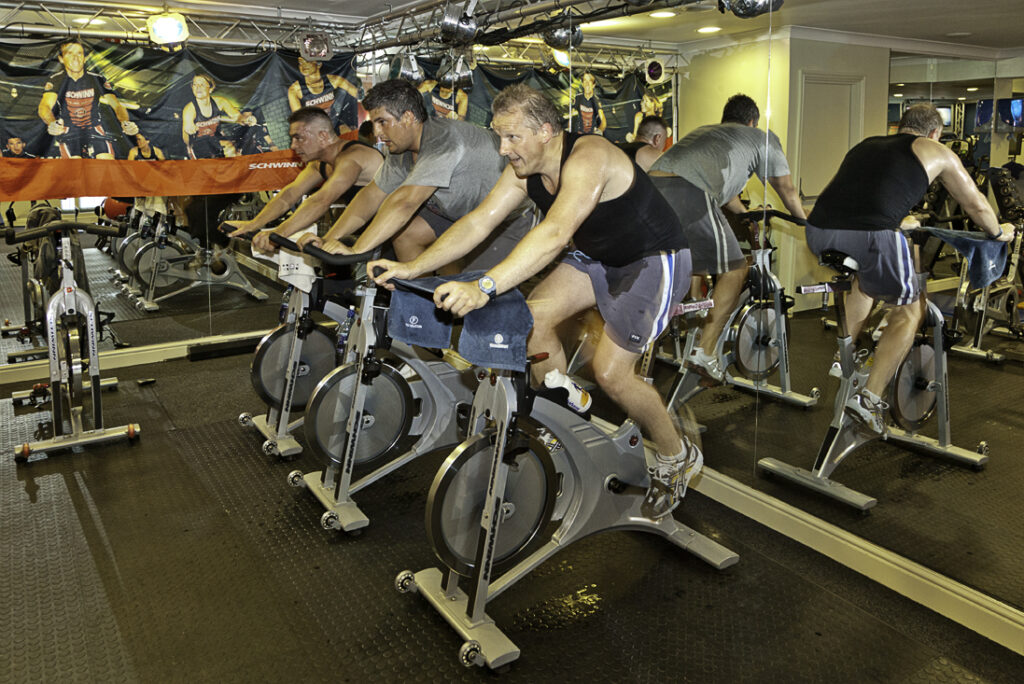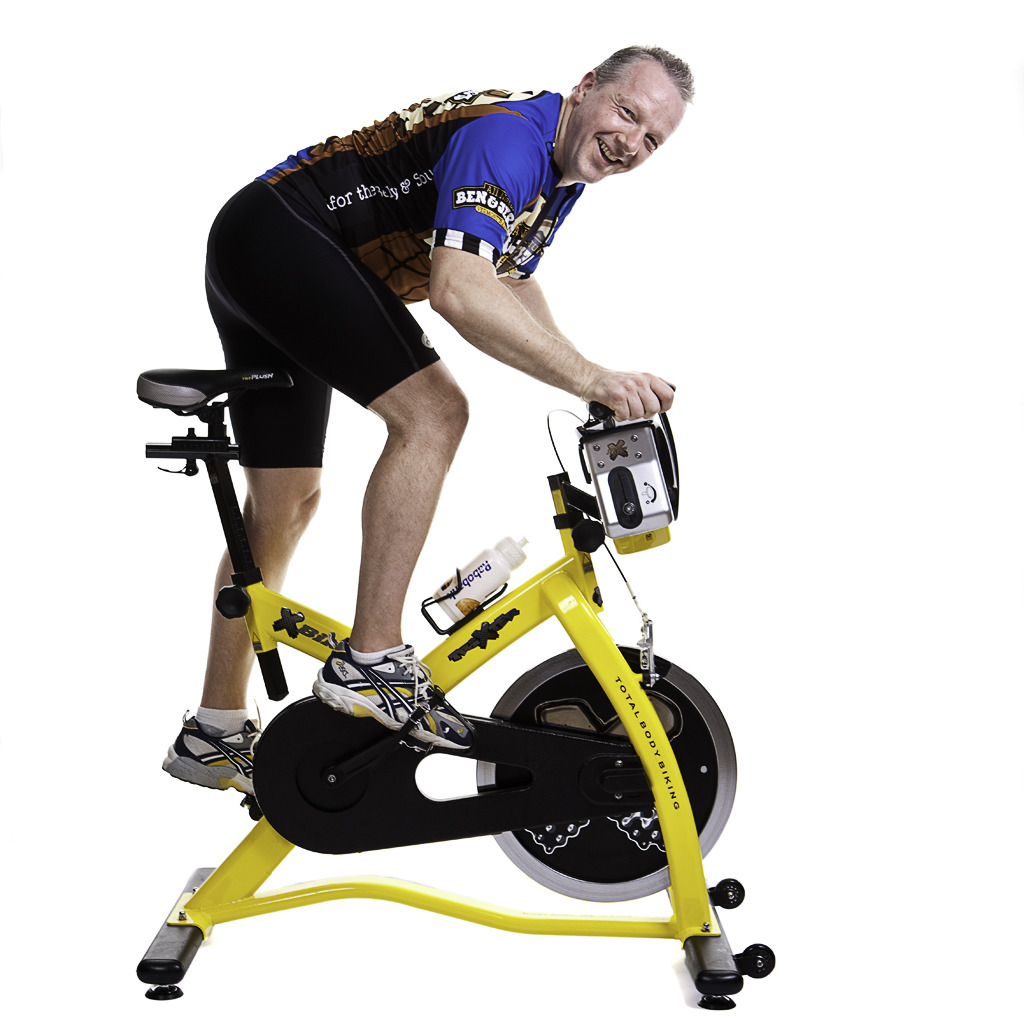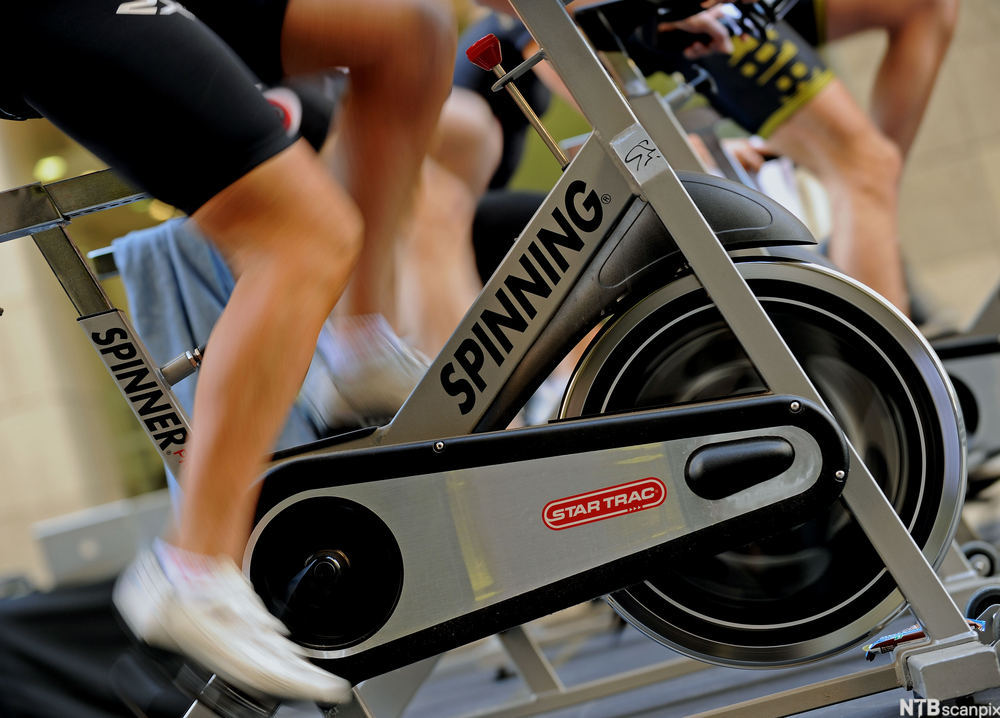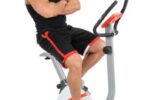Cycling and spinning are two popular forms of exercise that can help you achieve your fitness and health goals. Whether you prefer to ride a bike outdoors or join a spin class indoors, you can enjoy the benefits of cycling for your body and mind. In this article, we will explore some of the benefits of cycling and spinning, and how to get started with these activities.

Cycling for beginners
If you are new to cycling, you may wonder how to choose a bike, where to ride, and how to stay safe. Here are some tips for cycling for beginners:
- Choose a bike that fits your body size, riding style, and budget. You can visit a local bike shop or online retailer to find the right bike for you. Some common types of bikes are road bikes, mountain bikes, hybrid bikes, and electric bikes.
- Wear a helmet, gloves, sunglasses, and appropriate clothing for cycling. You may also want to invest in some accessories, such as a water bottle, a bike lock, a pump, a repair kit, and lights.
- Find a safe and scenic route to ride. You can use online tools, such as Google Maps or Strava, to plan your route and track your distance, speed, and elevation. You can also join a local cycling club or group to find new routes and meet other cyclists.
- Follow the rules of the road and be respectful of other road users. You should ride on the right side of the road, signal your turns and stops, obey traffic signs and signals, and avoid distractions, such as headphones or phone use. You should also be aware of potential hazards, such as potholes, debris, cars, pedestrians, and animals.
- Start slowly and gradually increase your intensity and duration. You don’t have to ride for hours or miles to enjoy the benefits of cycling. You can start with 10 to 15 minutes of cycling at a comfortable pace and then add 5 minutes or 10% more distance each week. You can also vary your speed and terrain to challenge yourself and improve your fitness.
Cycling indoors
If you don’t have access to a bike or prefer to exercise indoors, you can try cycling indoors on a stationary bike or joining a spin class. Cycling indoors has some advantages over cycling outdoors, such as:
- You can cycle anytime, regardless of the weather or daylight conditions.
- You can control the resistance and speed of your bike according to your fitness level and goals.
- You can monitor your heart rate, calories burned, distance traveled, and other metrics on your bike or device.
- You can listen to music, watch TV, or read while cycling indoors.
- You can join a spin class that is led by an instructor who motivates you and guides you through different phases of the workout.

How to lose weight cycling
Cycling is an effective way to burn calories and fat while building muscle and endurance. Depending on your weight, intensity, and duration of cycling, you can burn anywhere from 400 to 700 calories per hour. To lose weight cycling, you need to create a calorie deficit by burning more calories than you consume. Here are some tips on how to lose weight cycling :
- Cycle regularly and consistently. Aim for at least 150 minutes of moderate-intensity cycling or 75 minutes of vigorous-intensity cycling per week. You can also do a combination of both. For example, you can cycle for 30 minutes at a moderate pace three times a week and do a 45-minute spin class once a week.
- Combine cycling with strength training. Strength training can help you build muscle mass, which boosts your metabolism and helps you burn more calories at rest. It can also improve your cycling performance by strengthening your legs and core muscles. You can do strength training exercises using dumbbells, resistance bands, or your own body weight two to three times a week on non-consecutive days.
- Eat a balanced and nutritious diet that supports your cycling goals. You need to fuel your body with enough carbohydrates, protein, fat, vitamins, minerals, and water before, during, and after cycling. Carbohydrates provide energy for your muscles; protein helps repair and build muscle tissue; fat helps absorb vitamins and regulate hormones; vitamins and minerals support various bodily functions; water helps hydrate your cells and regulate your body temperature. You should also avoid processed foods, sugary drinks, alcohol, and excess salt, as they can hinder your weight loss efforts.

Benefits of cycling
Cycling has many benefits for your physical and mental health. Some of the benefits of cycling are:
- It improves your cardiovascular health by strengthening your heart muscle, lowering your blood pressure, reducing your cholesterol levels, and preventing stroke and heart attack.
- It enhances your respiratory health by increasing your lung capacity, improving your oxygen uptake, and reducing your risk of asthma and chronic obstructive pulmonary disease (COPD).
- It boosts your immune system by stimulating the production of white blood cells, antibodies, and natural killer cells, which fight off infections and diseases.
- It lowers your risk of diabetes by improving your insulin sensitivity, glucose tolerance, and blood sugar control.
- It prevents or delays osteoporosis by increasing your bone density and strength.
- It reduces your risk of some cancers by lowering your body fat percentage, inflammation levels, and oxidative stress.
- It improves your mood and mental health by releasing endorphins, serotonin, and dopamine, which are neurotransmitters that make you feel happy, calm, and motivated.
- It enhances your cognitive function and memory by increasing blood flow to your brain, stimulating the growth of new brain cells and connections, and preventing cognitive decline and dementia.

Cycling for cardio
Cycling is an excellent form of cardio exercise that can improve your aerobic fitness, endurance, and stamina. Cardio exercise is any activity that raises your heart rate and makes you breathe harder for a sustained period of time. Some of the benefits of cycling for cardio are:
- It increases your VO2 max, which is the maximum amount of oxygen your body can use during exercise. A higher VO2 max means you can exercise longer and harder without getting tired.
- It improves your heart rate variability (HRV), which is the variation in the time intervals between your heartbeats. A higher HRV means your heart can adapt to different situations and stressors more efficiently.
- It enhances your anaerobic threshold, which is the point at which your body switches from using oxygen to using glucose as its main energy source. A higher anaerobic threshold means you can exercise at a higher intensity without producing too much lactic acid, which causes muscle fatigue and soreness.
To get the most out of cycling for cardio, you need to vary your intensity and duration according to your fitness level and goals. You can use different methods to measure and adjust your intensity, such as:
- Rating of perceived exertion (RPE), which is how hard you feel you are working on a scale of 1 to 10, where 1 is very easy and 10 is very hard.
- Heart rate zones, which are percentages of your maximum heart rate (MHR), where 50 to 60% is low intensity, 60 to 70% is moderate intensity, 70 to 80% is high intensity, and 80 to 90% is very high intensity. You can estimate your MHR by subtracting your age from 220.
- Power zones, which are ranges of power output measured in watts, where zone 1 is recovery, zone 2 is endurance, zone 3 is tempo, zone 4 is threshold, zone 5 is VO2 max, zone 6 is anaerobic capacity, and zone 7 is neuromuscular power. You can measure your power output using a power meter or a smart trainer.
You can also use different types of cycling workouts to improve your cardio fitness, such as:
- Steady-state cycling, which involves cycling at a constant pace for a long duration (30 minutes or more) at a moderate intensity (60 to 70% of MHR or RPE 6 to 7). This type of cycling improves your endurance and fat-burning ability.
- Interval cycling, which involves cycling at a high intensity (80 to 90% of MHR or RPE 8 to 9) for a short duration (30 seconds to 5 minutes) followed by a low intensity (50 to 60% of MHR or RPE 4 to 5) for a longer duration (1 to 10 minutes). This type of cycling improves your VO2 max and anaerobic threshold.
- Hill cycling, which involves cycling uphill at a high intensity (70 to 80% of MHR or RPE 7 to 8) for a short duration (1 to 5 minutes) followed by a downhill or flat recovery at a low intensity (50 to 60% of MHR or RPE 4 to 5) for a longer duration (2 to 10 minutes). This type of cycling improves your strength and power.

Spinning bike
A spinning bike is a stationary bike that simulates outdoor cycling. It has a flywheel that creates resistance when you pedal, a handlebar that allows you to change positions, and an adjustable seat that fits your height. Some spinning bikes also have monitors that display metrics such as speed, distance, time, calories burned, heart rate, and power output.
Spinning bikes are commonly used in spin classes, which are group fitness classes that are led by an instructor who guides you through different phases of the workout. The instructor may also play music, use motivational cues, and adjust the lighting and temperature to create a fun and engaging atmosphere.
Spinning workout plan
A spinning workout plan is a structured program that helps you achieve your fitness and health goals by cycling on a spinning bike. A spinning workout plan may vary depending on your level, frequency, duration, and intensity of cycling. However, a general spinning workout plan may consist of the following elements:
- Warm-up: This is the first phase of the workout, where you cycle at a low to moderate intensity (50 to 60% of MHR or RPE 4 to 5) for 5 to 10 minutes to prepare your body and mind for the main workout. You may also do some dynamic stretches and mobility exercises to loosen up your muscles and joints.
- Main workout: This is the second phase of the workout, where you cycle at a moderate to high intensity (60 to 90% of MHR or RPE 6 to 9) for 20 to 45 minutes to challenge your cardiorespiratory system and burn calories. You may follow different types of cycling workouts, such as steady-state, interval, or hill cycling, depending on your goals and preferences. You may also change your cadence (speed of pedaling), resistance (difficulty of pedaling), and position (sitting or standing) to vary your intensity and target different muscle groups.
- Cool-down: This is the final phase of the workout, where you cycle at a low intensity (50% of MHR or RPE 4) for 5 to 10 minutes to gradually lower your heart rate and breathing rate. You may also do some static stretches and relaxation exercises to ease your muscles and joints and prevent soreness and injury.
Spinning for weight loss
Spinning is an effective way to lose weight because it burns a lot of calories in a short amount of time. According to Harvard Health Publishing, a 155-pound person can burn about 260 calories in 30 minutes of moderate-intensity cycling or about 391 calories in 30 minutes of vigorous-intensity cycling. To lose one pound of fat, you need to burn about 3,500 calories more than you consume.
However, spinning alone is not enough to lose weight. You also need to follow a healthy diet that creates a calorie deficit by eating fewer calories than you burn. You should aim for a moderate calorie deficit of about 500 calories per day, which can help you lose about one pound per week. You should also eat a balanced diet that includes plenty of fruits, vegetables, whole grains, lean protein, healthy fats, and water.
Additionally, you may want to combine spinning with other forms of exercise, such as strength training, yoga, or walking, to improve your overall fitness and health. Strength training can help you build muscle mass, which boosts your metabolism and helps you burn more calories at rest. Yoga can help you improve your flexibility, balance, and posture, which can enhance your cycling performance and prevent injury. Walking can help you increase your daily physical activity and reduce stress levels.
Spinning is a fun and effective way to improve your health and fitness. Whether you cycle outdoors or indoors, you can enjoy the benefits of cycling for your body and mind. By following a spinning workout plan and eating a healthy diet, you can also achieve your weight loss goals and feel great about yourself. So grab your bike or join a spin class today and start spinning your way to better health!
Conclusion
Cycling and spinning are two great ways to get fit and have fun. They’re both low-impact, so they’re easy on your joints, but they can still give you a good workout. Cycling and spinning can help you burn fat, build muscle, and improve your cardiovascular health. They can also help you improve your mood and reduce stress levels.
So if you’re looking for a healthy and fun way to get in shape, cycling or spinning is a great option. There are lots of different ways to get started, so you can find a method that’s right for you. So get out there and start pedaling!







